




When it comes to buying a washing machine, one important decision you’ll have to make is whether to go for an integrated or a freestanding model. Both options have their own advantages and disadvantages, so it’s important to consider your specific needs and requirements before making a final decision.
Integrated washing machines are designed to fit seamlessly into your kitchen cabinets, giving your kitchen a sleek and uniform look. These machines are hidden behind a cupboard door, so they don’t disrupt the overall aesthetic of your kitchen. They are perfect for those who value a clean and streamlined appearance in their kitchen, and don’t want their appliances to take up too much space or be a focal point.
On the other hand, freestanding washing machines offer greater flexibility and convenience. They can be installed anywhere in your home, and are not limited to the kitchen. This means you can place them in your utility room, bathroom, or even in the garage. Freestanding machines come in a wide range of sizes and styles, so you can choose the one that best suits your needs. Additionally, they are generally easier to install and can be moved more easily if you decide to rearrange your living space.
Ultimately, the choice between an integrated and freestanding washing machine depends on your personal preferences and the layout of your home. If you prioritize a seamless kitchen design and have limited space, an integrated machine may be the right choice for you. However, if you value convenience and flexibility, a freestanding machine might be a better fit. Consider your needs and preferences, and make a decision that best suits your lifestyle.
Comparing Integrated and Freestanding Washing Machines
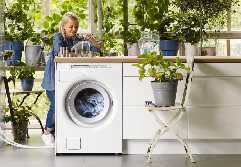
When it comes to choosing a washing machine for your home, one of the decisions you’ll have to make is whether to go for an integrated or freestanding model. Both options have their advantages and considerations, so it’s important to understand the differences between them before making a purchase.
Integrated Washing Machines
- Seamless Integration: Integrated washing machines are designed to blend seamlessly into your kitchen or laundry room. They are hidden behind cabinet doors or fitted with a panel that matches your existing cabinetry, creating a cohesive and streamlined look.
- Space-Saving: Since integrated washing machines are built into existing cabinetry or placed under countertops, they take up less floor space and can be a great option for smaller homes or apartments.
- Design Flexibility: Integrated washing machines offer a variety of design options, allowing you to choose a style that complements your kitchen or laundry room décor.
- Higher Cost: Integrated washing machines tend to be more expensive than freestanding models due to their specialized design and installation requirements.
- Difficult to Move: Once installed, integrated washing machines are not easily moved, so if you plan on relocating in the future, this may not be the best choice.
Freestanding Washing Machines
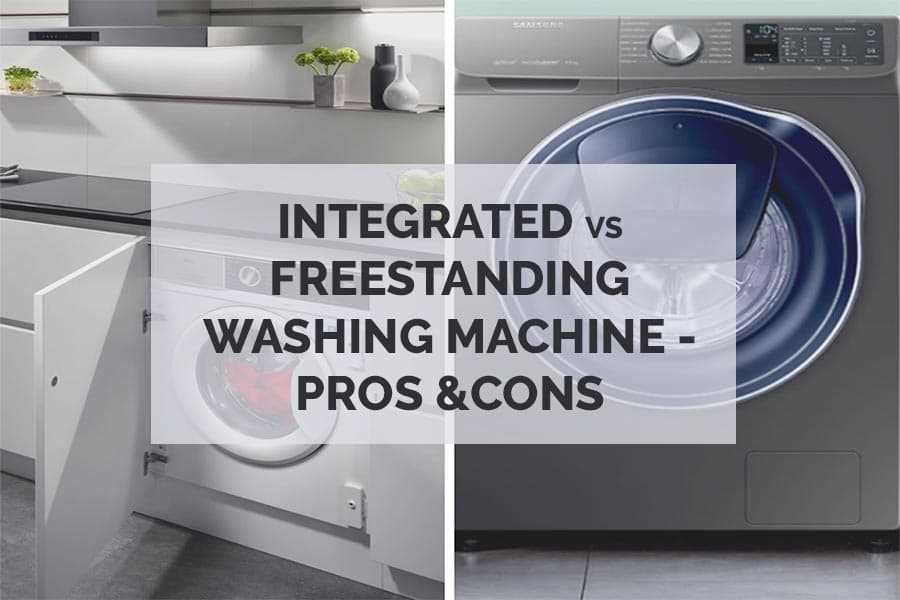
- Flexibility and Portability: Freestanding washing machines can be easily moved around as needed, making them a good option for those who may need to relocate or rearrange their laundry setup.
- Lower Cost: Freestanding washing machines are generally more affordable than integrated models, making them a budget-friendly choice.
- No Installation Required: Unlike integrated washing machines, freestanding models can be simply plugged into an electrical outlet and hooked up to a water source, without the need for specialized installation.
- Less Design Options: Freestanding washing machines come in a wide range of styles and designs, but they may not offer the same level of customization and integration as integrated models.
- Visible Appearance: Freestanding washing machines are not hidden behind cabinet doors and can be visually prominent in your laundry area.
In conclusion, the choice between an integrated or freestanding washing machine ultimately depends on your specific needs and preferences. Consider factors such as your available space, design requirements, budget, and future plans before making a decision. Both options have their benefits and drawbacks, so weigh them carefully to find the right fit for your home.
Consider Your Kitchen Design
When deciding between an integrated or freestanding washing machine, it’s important to take your kitchen design into consideration. The type of machine you choose will greatly depend on the layout and aesthetics of your kitchen.
1. Space: Measure the available space in your kitchen to determine if you have enough room for a freestanding washing machine. These machines are typically larger and require ample floor space. On the other hand, if space is limited, an integrated washing machine, which is designed to be built-in to your kitchen cabinets, might be a better option.
2. Style: Think about the overall style of your kitchen and whether you want the washing machine to blend in or stand out. Freestanding machines come in a variety of colours and designs, so you can choose one that complements your kitchen decor. However, if you prefer a seamless and minimalist look, an integrated machine will hide the appliance behind a cabinet door, creating a sleek and uniform appearance.
3. Maintenance: Consider how easy it will be to clean and maintain the washing machine. Freestanding machines are easier to access for repairs and cleaning, as they are not hidden behind cabinets. Integrated machines, on the other hand, may require additional steps for maintenance, such as removing the cabinet door to access the machine.
4. Future plans: Think about your future plans for your kitchen. If you anticipate a kitchen remodel in the near future, it may be more practical to choose a freestanding washing machine, as it can be easily moved or replaced. Integrated machines require a more involved installation process, so they may not be as flexible in terms of future kitchen changes.
| Considerations | Freestanding | Integrated |
|---|---|---|
| Space | Requires more floor space | Fits into kitchen cabinets |
| Style | Comes in various colours and designs | Hides behind a cabinet door |
| Maintenance | Easier to access for cleaning and repairs | May require additional steps for maintenance |
| Future plans | Easily movable or replaced | Requires more involved installation process |
In conclusion, when considering your kitchen design, think about the available space, the style you want to achieve, the maintenance requirements, and your future plans for the kitchen. By carefully assessing these factors, you can make an informed decision on whether an integrated or freestanding washing machine is right for you.
Pros and Cons of Integrated Washing Machines
Pros:
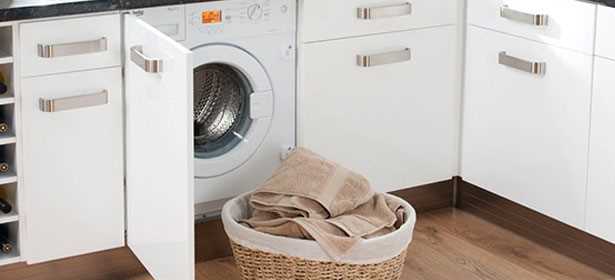
- Sleek and seamless design: Integrated washing machines are built to blend in seamlessly with the rest of your kitchen cabinetry, creating a sleek and modern look.
- Space-saving: Since integrated washing machines are built into your kitchen cabinets, they don’t take up any additional floor space, making them ideal for smaller kitchens.
- Customizable: You have the freedom to choose the style, color, and finish of your kitchen cabinetry, allowing you to create a cohesive and personalized look.
- Reduced noise: Integrated washing machines tend to be quieter compared to freestanding models, as they are surrounded by the cabinet and insulation, which helps to muffle the noise.
- Flexible installation options: Integrated washing machines can be installed under the kitchen counter, in a separate cabinet, or even in a pantry, providing flexibility in terms of placement.
Cons:

- Higher cost: Integrated washing machines tend to be more expensive than their freestanding counterparts, due to the additional cost involved in customizing and integrating them into your kitchen.
- Restricted accessibility: Integrated washing machines can be more difficult to access for installation, maintenance, and repairs, as they are built into the kitchen cabinets and may require professional assistance.
- Limited options: Integrated washing machines have a narrower range of options compared to freestanding models, as they need to fit into the predefined space within your kitchen cabinetry.
- Less visibility: The integrated design may make it harder to monitor the washing process, as the control panel and display may be located inside the cabinet and not easily visible from the outside.
- Less mobility: Once installed, integrated washing machines are not easily moveable, so if you plan on rearranging your kitchen in the future, it may require additional work to relocate the machine.
Overall, integrated washing machines offer a seamless and space-saving solution for those looking for a modern and minimalist kitchen design. However, they come with a higher upfront cost and limited flexibility, so it’s important to consider your specific needs and preferences before making a decision.
Pros and Cons of Freestanding Washing Machines
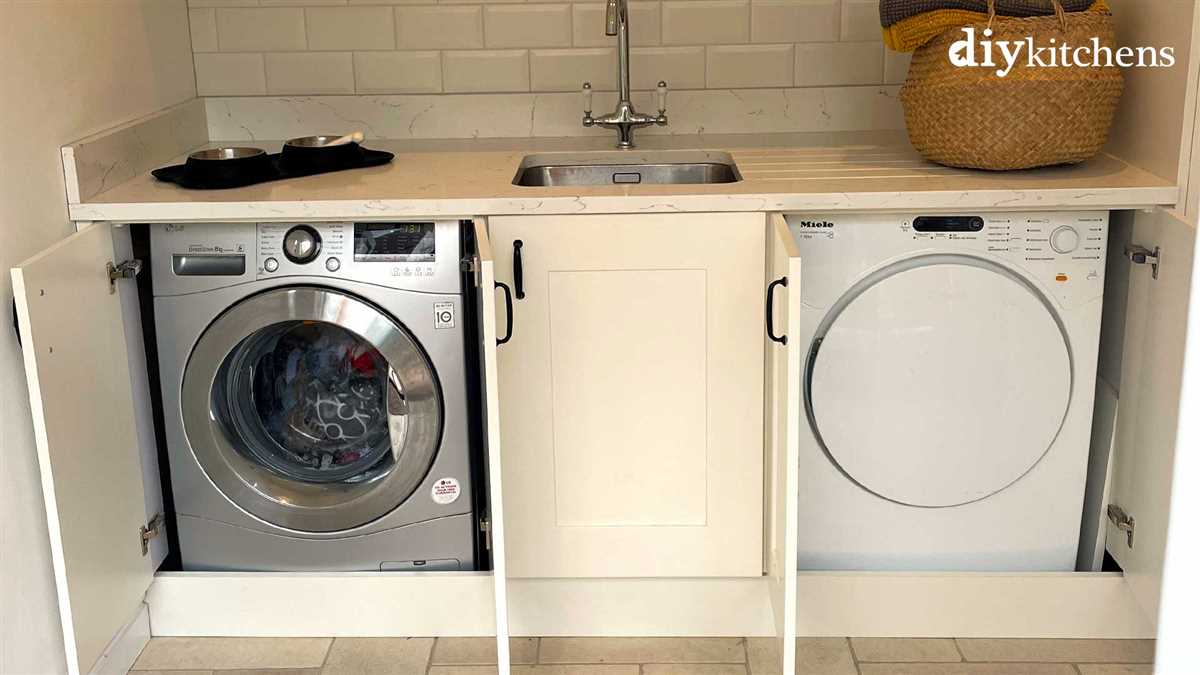
When it comes to choosing a washing machine for your home, one of the options you have is a freestanding washing machine. These machines offer their own set of advantages and disadvantages. Here are some pros and cons to consider when deciding whether a freestanding washing machine is right for you:
Pros:
- Portability: Freestanding washing machines are easy to move around as they are not built into any specific area of your home. This can be helpful if you plan on moving or rearranging your laundry area in the future.
- Flexibility: Freestanding washing machines can be placed anywhere in your home as long as there is a water connection and a drain. This gives you more flexibility in terms of the location of your laundry area.
- Wide range of options: Freestanding washing machines come in various sizes, capacities, and features, allowing you to choose the one that best fits your needs and preferences. You have the freedom to select a machine that suits your specific laundry requirements.
- Affordability: In general, freestanding washing machines tend to be less expensive compared to integrated models. If budget is a concern, a freestanding washing machine might be a more cost-effective option.
Cons:
- Space requirements: Freestanding washing machines require a dedicated space in your home. If you have limited space or a small laundry area, a freestanding washing machine may not be the best choice.
- Aesthetics: Unlike integrated washing machines, freestanding models are not designed to seamlessly blend in with your kitchen or laundry room décor. This may be a drawback if you prioritize a sleek and integrated look in your home.
- Less efficient use of space: Freestanding washing machines take up more floor space compared to integrated models, which can be an issue if you have a small laundry area or need to maximize space in your home.
- No custom integration: With freestanding washing machines, you cannot customize or integrate them into your cabinetry or countertops. If you desire a seamless and built-in look for your laundry area, a freestanding washing machine may not be the ideal choice.
Considering these pros and cons will help you make an informed decision when choosing between a freestanding and integrated washing machine. Ultimately, it is important to assess your personal preferences, space availability, and budget to determine which option is the best fit for your home.
Efficiency and Performance
When it comes to choosing between an integrated and a freestanding washing machine, one of the factors to consider is the efficiency and performance of the appliance. Both types of washing machines can offer high-quality cleaning, but there are some key differences to keep in mind.
Efficiency
- Water Efficiency: Integrated washing machines often come with sensors that adjust the water level based on the load size, resulting in lower water consumption. Freestanding machines may not have this feature, so they could use more water.
- Energy Efficiency: Both integrated and freestanding washing machines have energy-efficient models. Look for the Energy Star certification or a high energy efficiency rating to ensure that the machine will save you money on your utility bills.
- Detergent Efficiency: Some integrated machines have automatic detergent dispensers that release the right amount of detergent for each cycle, helping to avoid wastage. Freestanding machines typically require manual measuring of the detergent.
Performance
- Noise: Integrated washing machines tend to offer quieter operation as they are designed to be hidden behind a cabinet door and can have additional insulation. Freestanding machines may produce more noise, especially during certain cycles.
- Capacity: Both types of machines come in various sizes, but integrated machines can sometimes have a smaller capacity due to the space limitations of the integrated design. Freestanding machines often offer larger drum sizes, allowing you to wash more laundry at once.
- Advanced Features: Integrated machines may come with advanced features such as Wi-Fi connectivity, allowing you to control and monitor your machine remotely. Freestanding machines also offer advanced features but may have a wider range of options available.
Ultimately, the efficiency and performance of a washing machine depend on the specific model and brand. It’s important to compare the specifications and read customer reviews to find the best option for your needs and preferences.
Choosing the Right Washing Machine for You
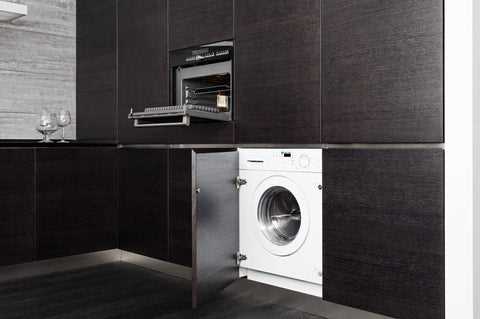
When it comes to purchasing a new washing machine, there are a few factors to consider to ensure you choose the right one for your needs. One of the first decisions you will need to make is whether to go for an integrated or freestanding washing machine. Here are some things to consider:
1. Space
If you have limited space in your laundry room or kitchen, a freestanding washing machine may be the best option. These machines can be placed anywhere in the room and are not limited by built-in cabinets or units.
2. Design
If you are looking for a seamless, integrated look in your kitchen or laundry room, an integrated washing machine may be the better choice. These machines are designed to fit perfectly into your existing cabinetry, hiding them from view.
3. Flexibility
Freestanding washing machines offer more flexibility when it comes to installation and relocation. If you are planning to move in the future or prefer to rearrange your appliances, a freestanding machine can easily be moved to a new location.
4. Cost

In general, integrated washing machines tend to be more expensive than freestanding ones. If budget is a concern, you may want to consider a freestanding machine which offers similar features at a lower cost.
5. Features
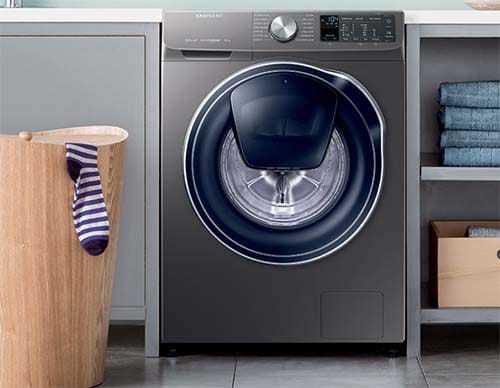
Both integrated and freestanding washing machines offer a range of features and functions. Consider your laundry needs, such as load capacity, spin speed, energy efficiency, and special programs, when comparing different models.
6. Maintenance
When it comes to maintenance and repairs, integrated washing machines may be more complicated and expensive to service. Freestanding machines are typically easier to access and repair, as they are not built into cabinetry.
7. Personal Preference
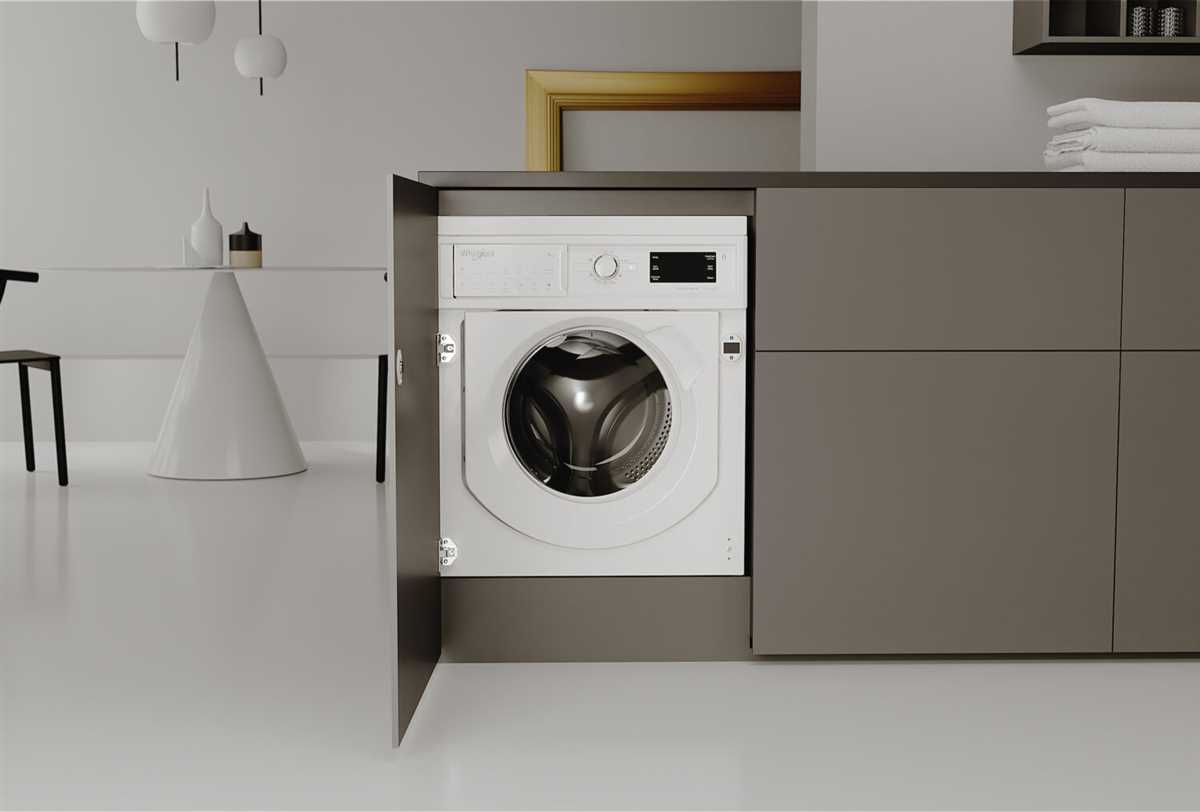
Ultimately, the decision between an integrated and freestanding washing machine comes down to personal preference. Consider your aesthetic preferences, space limitations, and budget to make the best choice for your home.
By considering these factors, you can make an informed decision and choose the right washing machine that meets your needs and fits seamlessly into your home.
FAQ
What is the difference between an integrated and freestanding washing machine?
The main difference between an integrated and freestanding washing machine is how they are installed and their appearance in your kitchen or laundry room. An integrated washing machine is designed to be built-in and hidden behind a cabinet door, so it blends seamlessly with the rest of your kitchen. On the other hand, a freestanding washing machine is standalone and can be placed anywhere in your laundry room or kitchen without the need for additional cabinetry.
Which type of washing machine is more expensive, integrated or freestanding?
Generally, integrated washing machines tend to be more expensive than freestanding ones. This is because integrated washing machines are designed to be hidden behind a cabinet door and often have additional features and technologies to seamlessly integrate with the rest of your kitchen. However, the price difference can vary depending on the brand, model, and specific features of the washing machines.
Can I uninstall an integrated washing machine and replace it with a freestanding one?
Yes, it is possible to uninstall an integrated washing machine and replace it with a freestanding one. However, it may require some additional work to remove the integrated machine and make adjustments to the cabinetry or countertop to accommodate the freestanding machine. It is recommended to consult a professional or follow the manufacturer’s instructions for proper installation.
Are there any differences in performance or features between integrated and freestanding washing machines?
No, there are generally no differences in performance or features between integrated and freestanding washing machines. Both types of machines offer similar washing and drying capabilities, and they often have similar features such as multiple wash programs, energy-saving options, and adjustable temperature settings. The main difference lies in their installation and appearance.
Which type of washing machine is easier to clean and maintain, integrated or freestanding?
Both integrated and freestanding washing machines require regular cleaning and maintenance to ensure optimal performance and longevity. However, an integrated washing machine may be slightly more difficult to clean and maintain due to its built-in design. It may require removing the cabinet door and accessing the machine from behind to clean or repair it. In contrast, a freestanding washing machine is easier to access and clean as it is standalone.
What is the difference between an integrated washing machine and a freestanding washing machine?
An integrated washing machine is built into your kitchen units and can be concealed behind a door. A freestanding washing machine, on the other hand, stands alone and does not need to be integrated into existing kitchen units.
Which one is better, an integrated washing machine or a freestanding washing machine?
The choice between an integrated washing machine and a freestanding washing machine depends on your personal preferences and the layout of your kitchen. If you prefer a seamless, uniform look in your kitchen, an integrated washing machine may be a better option. However, if you value flexibility and the ability to easily move the washing machine around, a freestanding washing machine may be more suitable for you.












